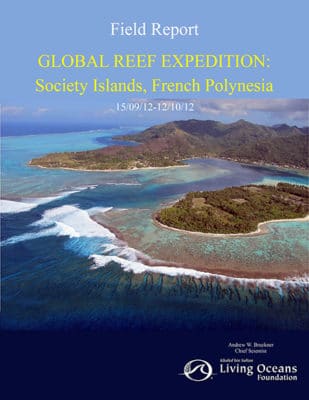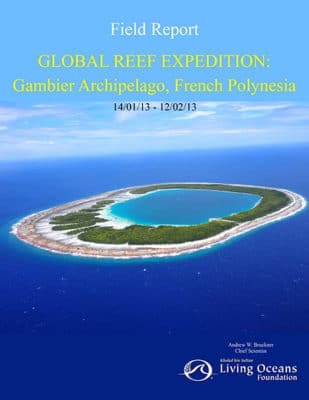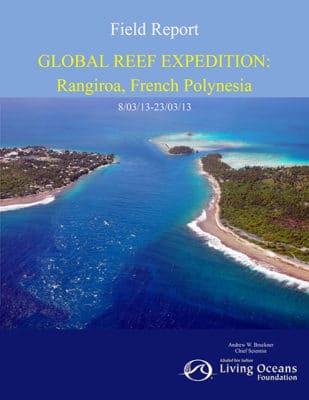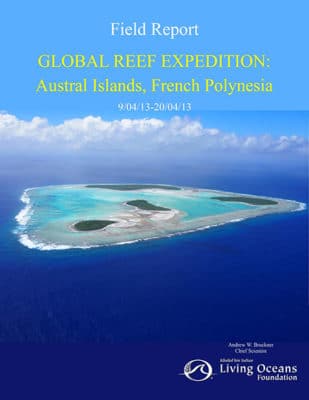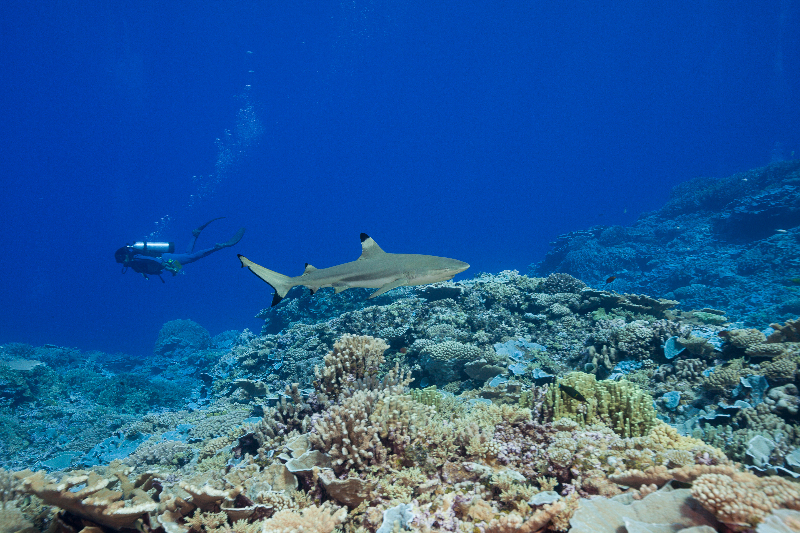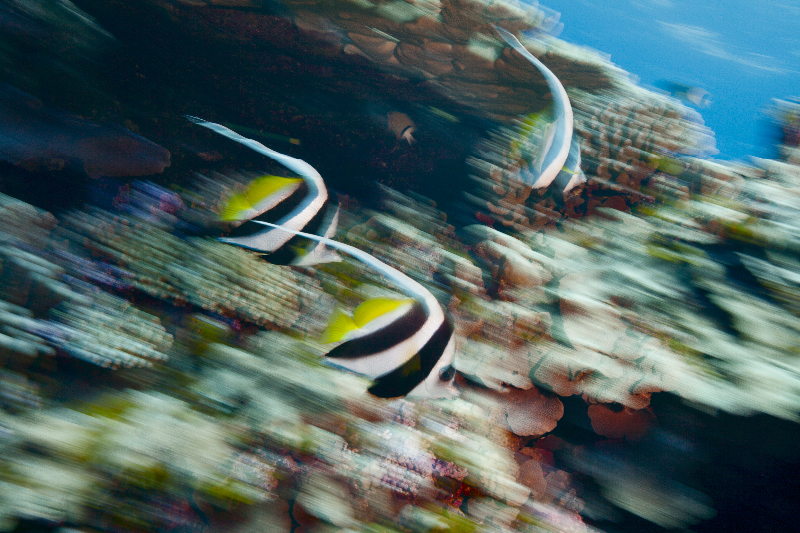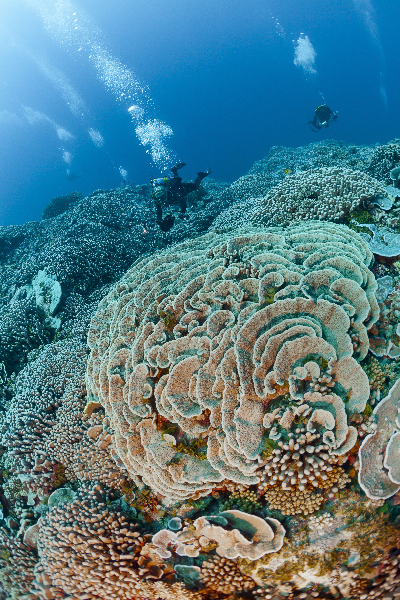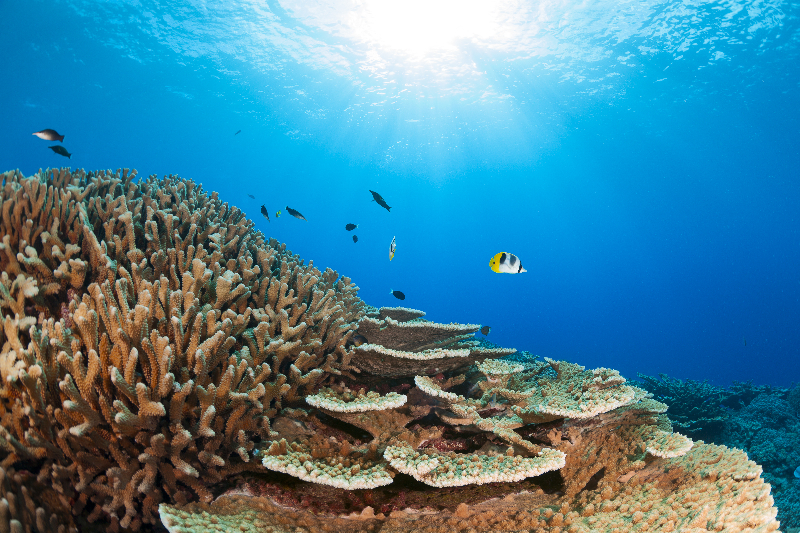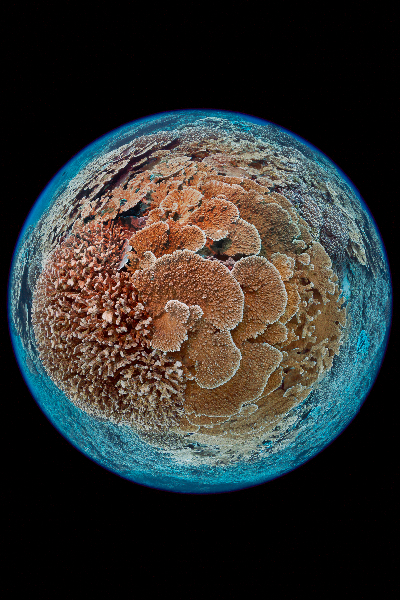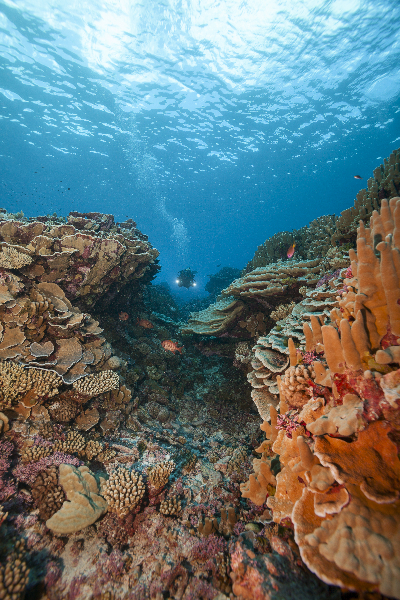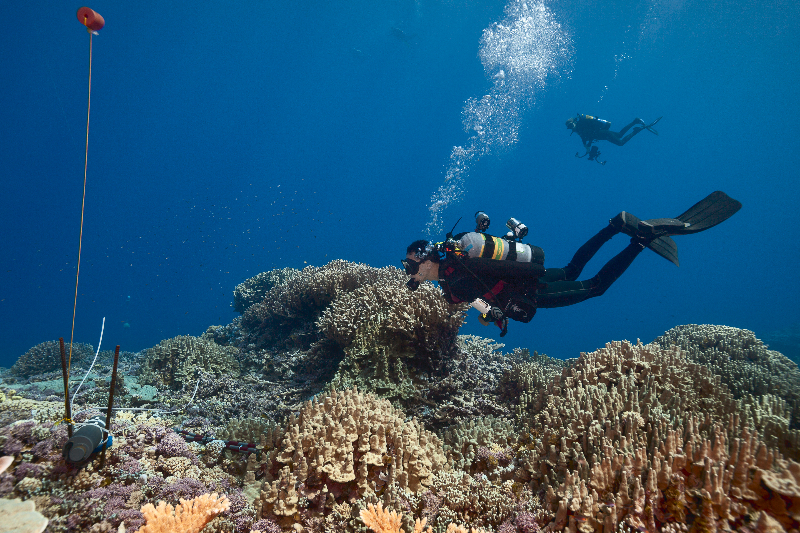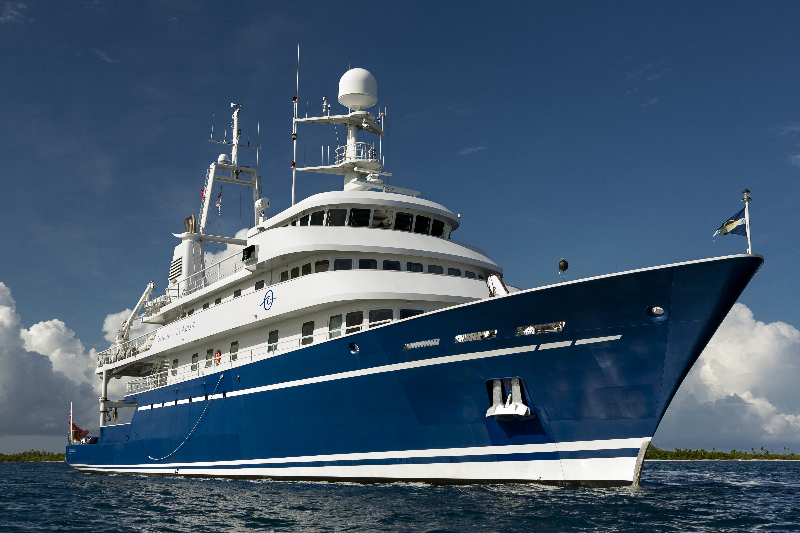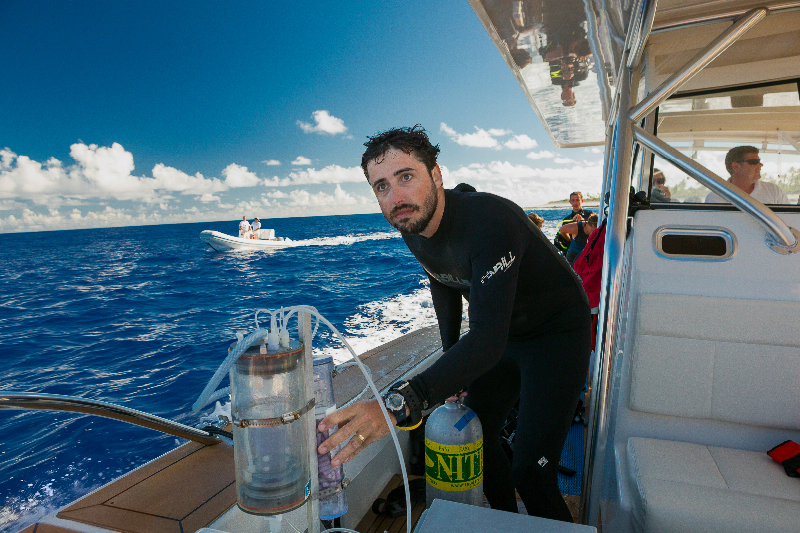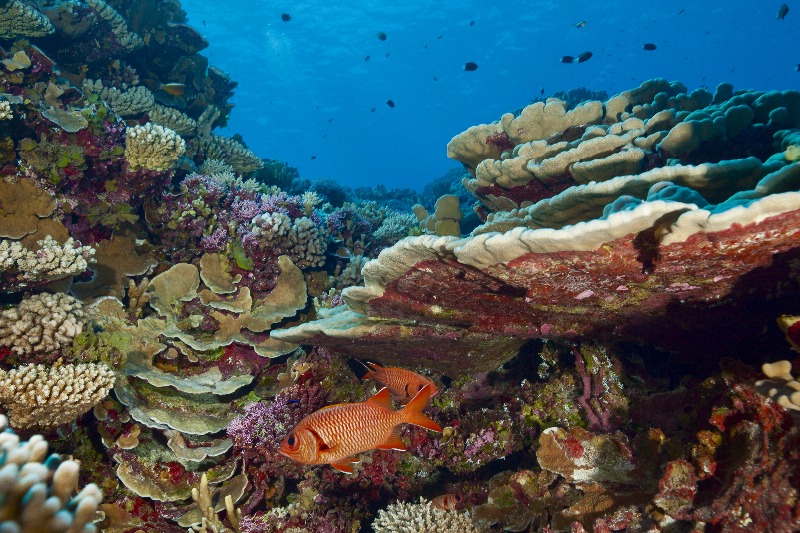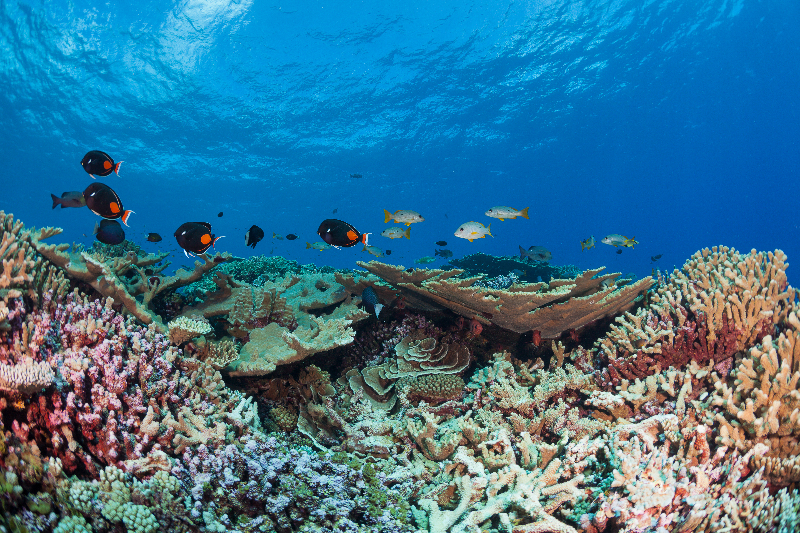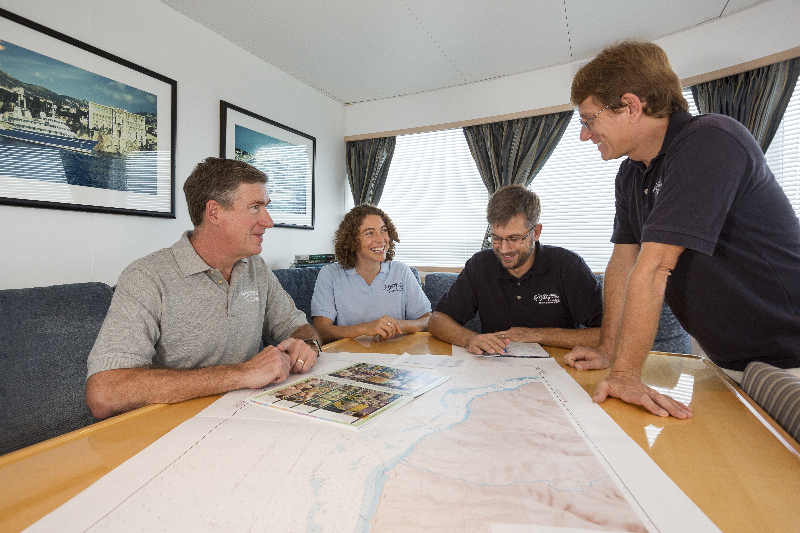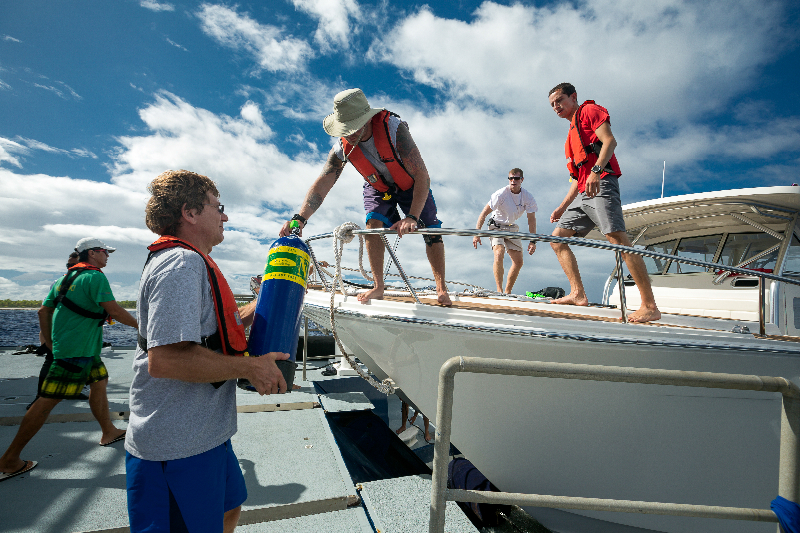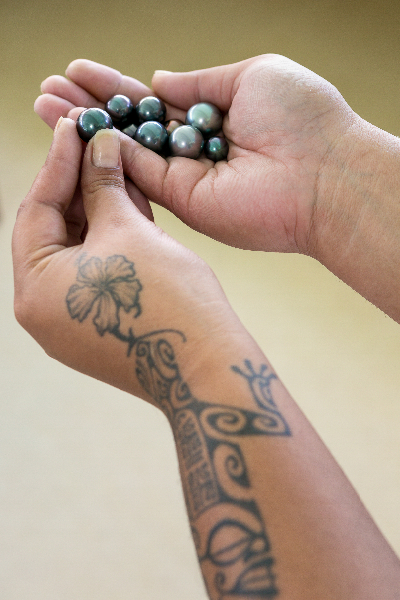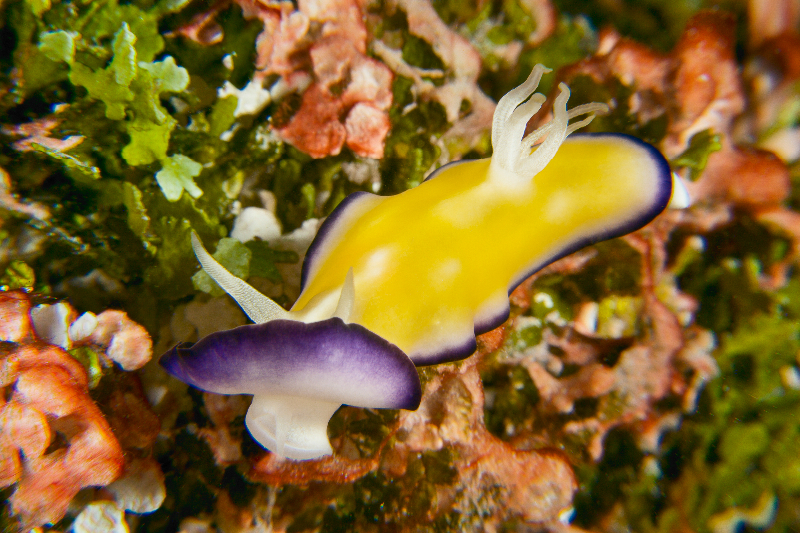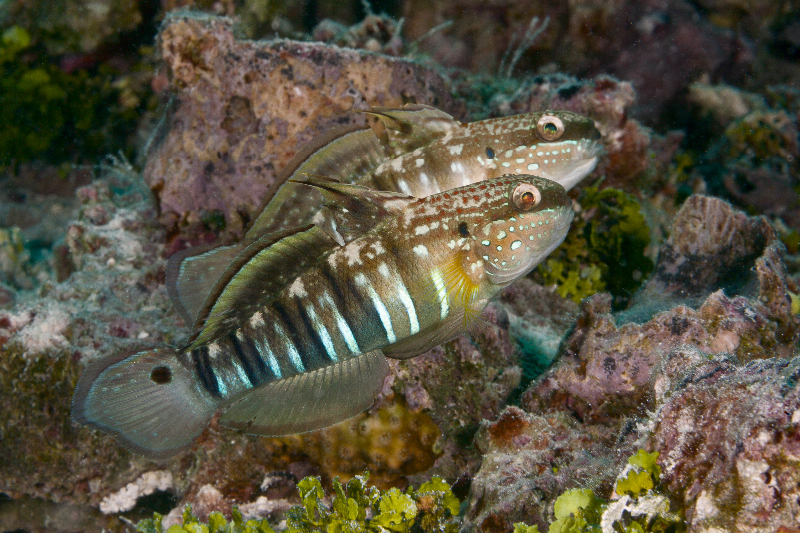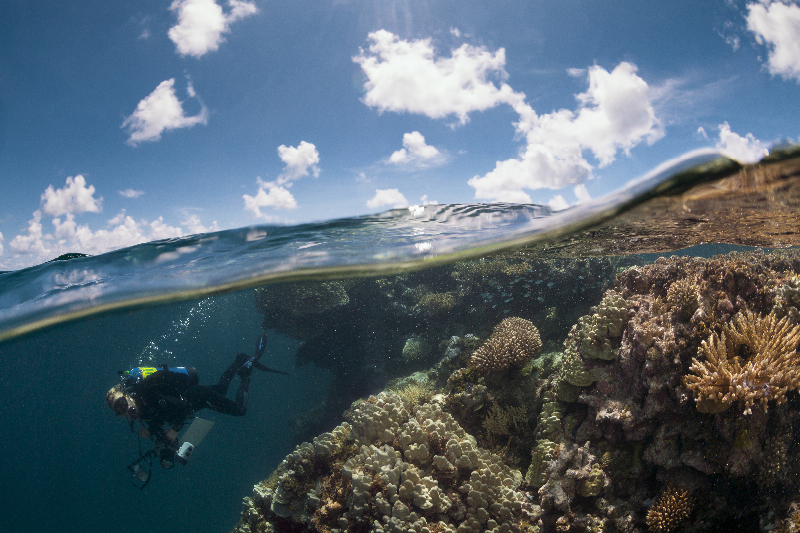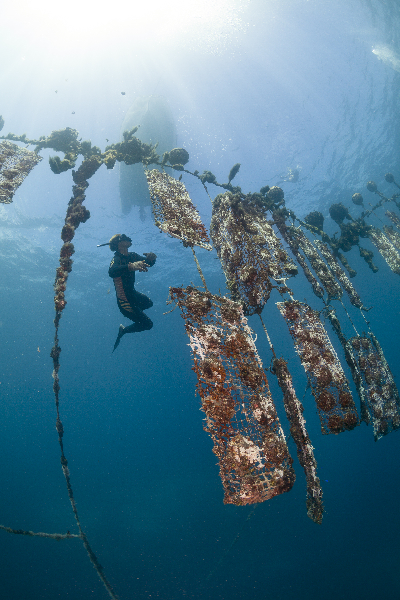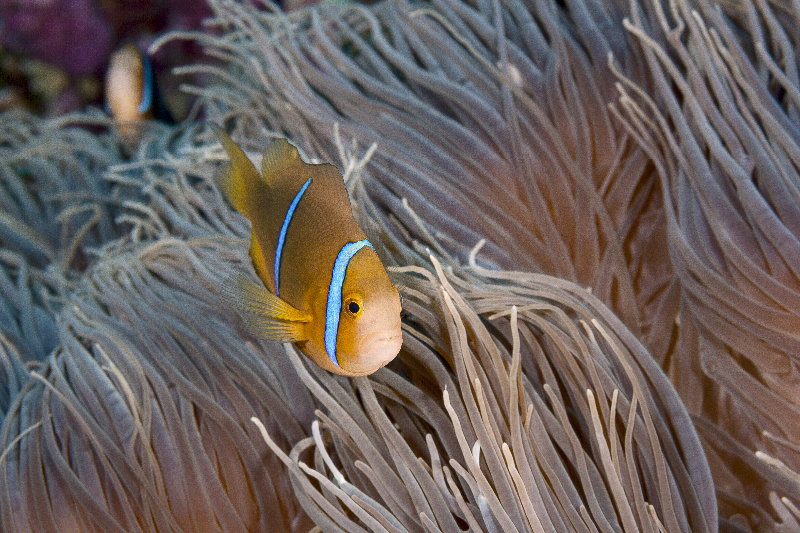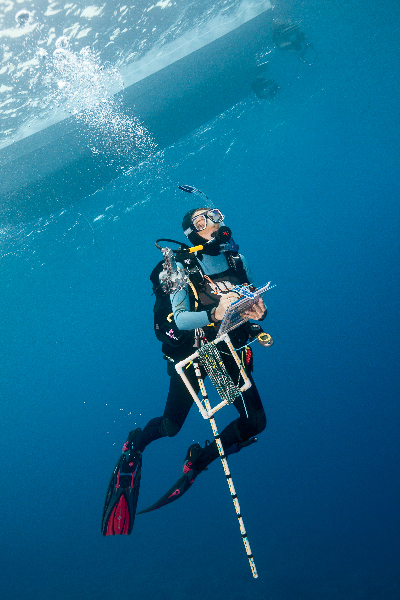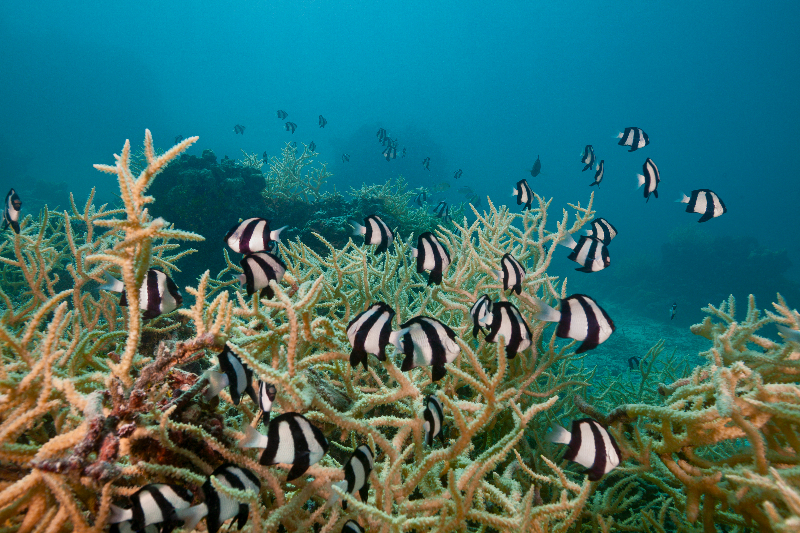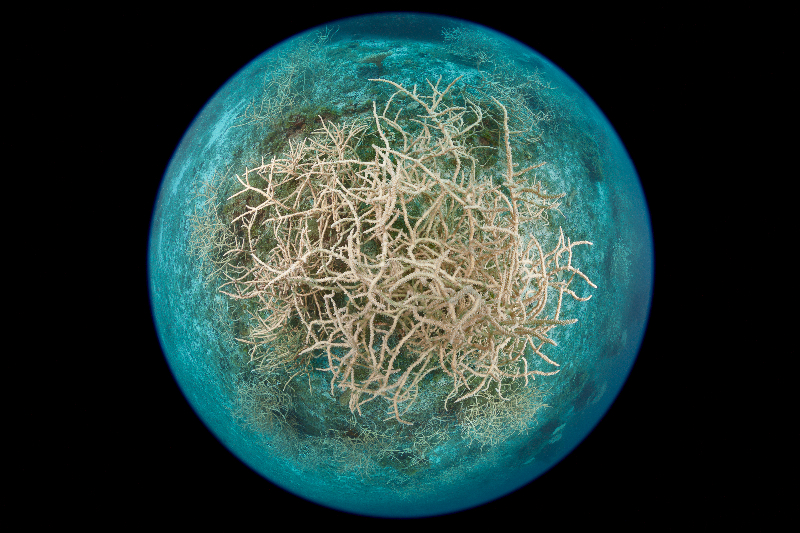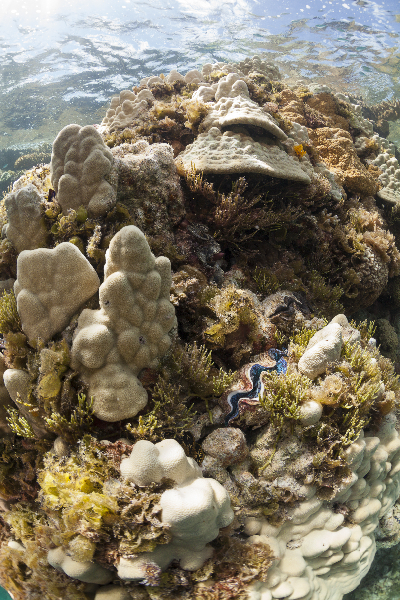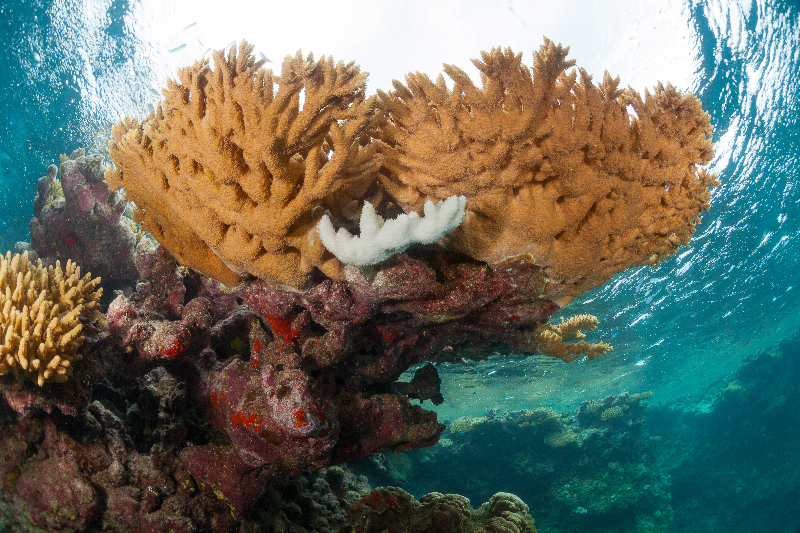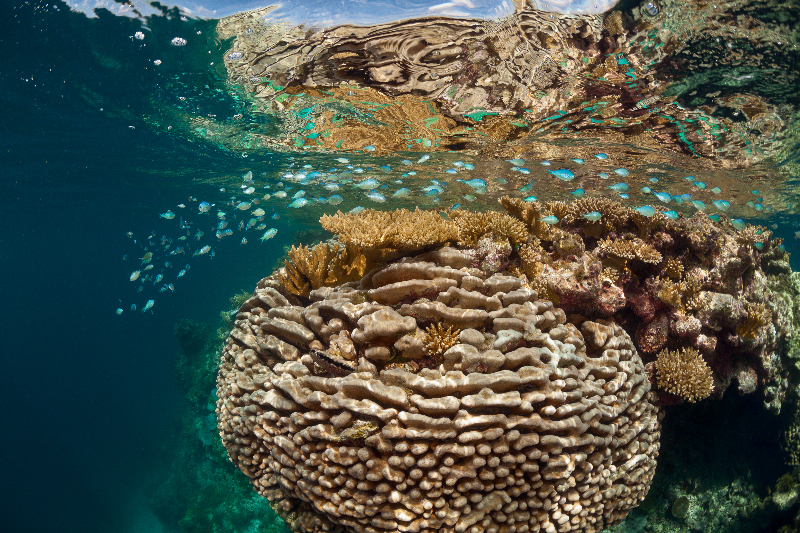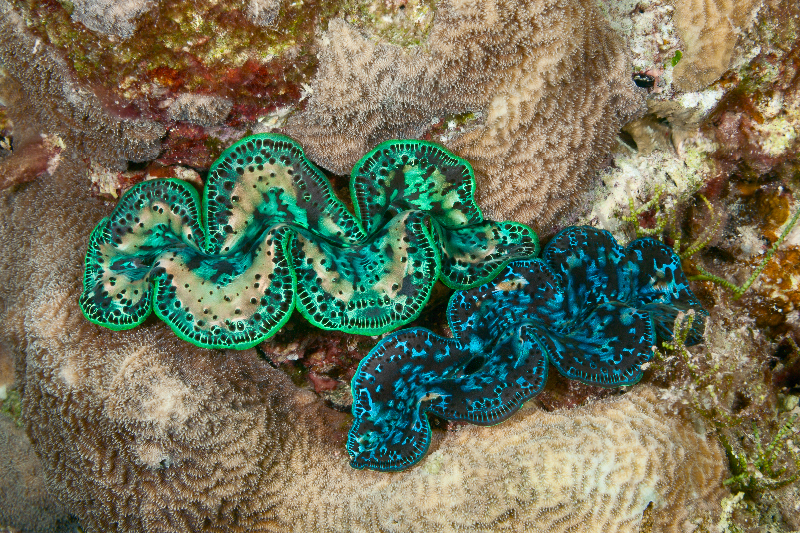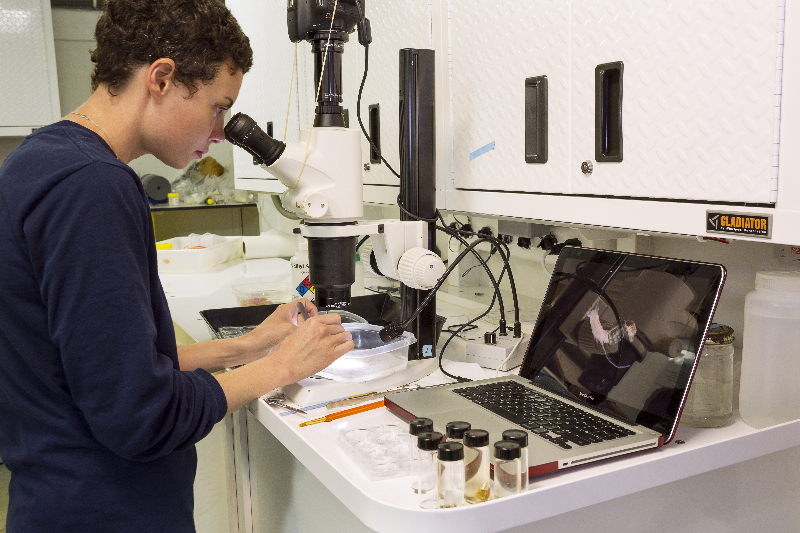French Polynesia
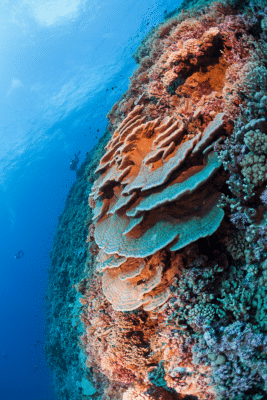 The Khaled bin Sultan Living Oceans Foundation set out to assess the health and resilience of the coral reefs in the Overseas Lands of French Polynesia on the Global Reef Expedition (GRE) — the largest coral reef survey and mapping expedition in history. During a seven-month period from September 2012 through April 2013, the Foundation quantitatively measured and categorized coral reefs in four of the five major archipelagoes of French Polynesia:
The Khaled bin Sultan Living Oceans Foundation set out to assess the health and resilience of the coral reefs in the Overseas Lands of French Polynesia on the Global Reef Expedition (GRE) — the largest coral reef survey and mapping expedition in history. During a seven-month period from September 2012 through April 2013, the Foundation quantitatively measured and categorized coral reefs in four of the five major archipelagoes of French Polynesia:
In total, the Foundation covered well over 8,000 kilometers of French Polynesian waters on this research mission, making this the largest comprehensive coral reef survey ever conducted in French Polynesia.
Vibrant coral reefs are found throughout French Polynesia, providing one of the main sources of income in the region. These reefs sustain tourism, support black pearl industries that employ over 5000 people and are worth more than $100 million annually, and provide livelihoods through reef fisheries. Yet, over the last two decades, a number of sites have experienced major degradation from cyclones, crown-of-thorns sea star infestations, and coral reef bleaching events. Also, in some locations, there is a high prevalence of ciguatera fish poisoning,
Collectively, our research aimed to identify the healthiest and most valuable coral reefs in the region, determine how well damaged reefs have recovered from past disturbances, and predict future changes to these systems. Together with our high-resolution benthic habitat maps, we were able to provide tools and information that can help in the conservation of French Polynesia’s coral reefs.
Scientific Research
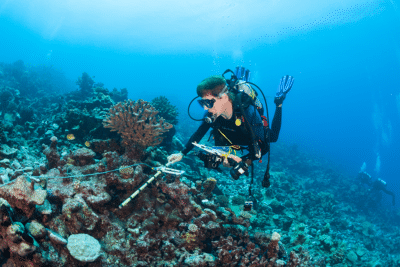 Our dedicated team of scientists set out on this mission to better understand the status of French Polynesia’s coral reefs and their resilience to a host of impacts, both natural and man-made. These assessments provided a unique opportunity to compare reef systems over a large geographical area. The archipelagos we studied experience vastly different environmental conditions and varying scales of human impact, and include remote locations that have never been surveyed before.
Our dedicated team of scientists set out on this mission to better understand the status of French Polynesia’s coral reefs and their resilience to a host of impacts, both natural and man-made. These assessments provided a unique opportunity to compare reef systems over a large geographical area. The archipelagos we studied experience vastly different environmental conditions and varying scales of human impact, and include remote locations that have never been surveyed before.
This unprecedented scientific mission involved 73 scientists from numerous organizations around the world who worked side by side with French Polynesian marine scientists to gather the highest quality data. The mission in French Polynesia was conducted with the following objectives:
- Collect vital data contributing to our global assessment of coral reef health and resilience.
- Document the impacts of broad-scale disturbances and patterns of recovery with an emphasis on storm damage and Crown-of-Thorns Starfish predation impacts.
- Provide recommendations to help guide Marine Protected Area (MPA) delineation and zoning for protection of French Polynesian reef resources.
The Foundation’s research in French Polynesia utilized standardized sampling methods to map and survey coral reef benthic and fish communities around 29 islands in French Polynesia. Over 1,600 benthic coral reef surveys and 2,200 fish surveys were completed on SCUBA at 264 dive sites throughout the country, and over 9,300 km2of satellite imagery was collected and mapped.
HABITAT MAPPING
High-resolution habitat and bathymetric maps were created for each of the locations surveyed in French Polynesia. Of great value to marine spatial planning efforts, these maps can be used by scientists and the public. Marine managers may find them particularly helpful in establishing areas for protection. All of the maps we created are available on our online map portal.
BENTHIC COVER ASSESSMENT
The health of the reefs in French Polynesia was generally very good, but varied greatly by archipelago and atoll surveyed. The Gambier Archipelago had, by far, the highest average coral cover recorded in all of French Polynesia (58% live coral). When compared to other reef habitats surveyed on the GRE, the live coral cover recorded at Gambier was an astounding 20% higher than the next highest region in French Polynesia.
FISH COMMUNITY ASSESSMENTS
The fish communities in French Polynesia had moderate species richness, density, and biomass. The Tuamotu Archipelago had the healthiest reef fish communities with the highest species richness, density, and biomass recorded, nearly five times that observed elsewhere in French Polynesia. There was a high abundance of large target species and top predatory fish in this archipelago and it is believed that with the implementation of effective management measures, these reef fish communities will continue to thrive. Generally speaking, fish communities mimicked trends of the coral communities. Places that had the highest coral cover had relatively healthy fish communities, and locations with the lowest coral cover had poor fish communities. We also found fish communities to be correlated with human population centers where the higher the human population, the more degraded the fish and benthic communities.
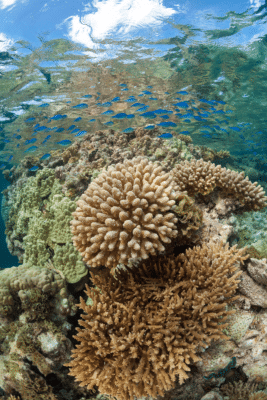 EFFECTS OF DISTURBANCE ON CORAL REEF COMMUNITIES
EFFECTS OF DISTURBANCE ON CORAL REEF COMMUNITIES
Coral reefs in the Society and Austral Islands in French Polynesia were severely damaged in the early 200s by outbreaks of crown of thorns starfish and tropical cyclones. In some locations, coral cover was reduced to only 5-8%, with new recruitment and recovery only noted in Society Archipelago. Marine spatial connectivity is a critical component of the recovery of these reefs, and with management of the upstream and local coral and fish populations, there is hope that these regions can recover.
The Khaled bin Sultan Living Oceans Foundation is providing government officials and conservation organizations in French Polynesia with maps, data, and a summary of our findings on the health and resiliency of the coral reefs we surveyed in French Polynesia. The Foundation hopes that our research findings will be used by the people of French Polynesia to help effectively protect and manage their benthic and fish community resources. While there have been some reported changes to the reefs we surveyed in French Polynesia since our expedition, the baseline dataset we obtained on this research mission provides optimism that in the face of continued natural and anthropogenic disturbance, the reefs of French Polynesia will continue to flourish.
Global Reef Expedition: French Polynesia Final Report
The Global Reef Expedition: French Polynesia Final Report provides a comprehensive summary of the research findings from the Expedition, an assessment of the health and resiliency of French Polynesia’s coral reefs, and recommendations for preserving French Polynesia’s coral reefs into the future.
French Polynesia Field Reports
Five French Polynesia field reports have been released for coral reef research conducted from September of 2012 through April of 2013 during the following missions of our Global Reef Expedition:
Photos
All photographs on this page are by iLCP photographer Michele Westmorland, who joined us on the Global Reef Expedition mission to French Polynesia. All images ©Michele Westmorland/iLCP.
